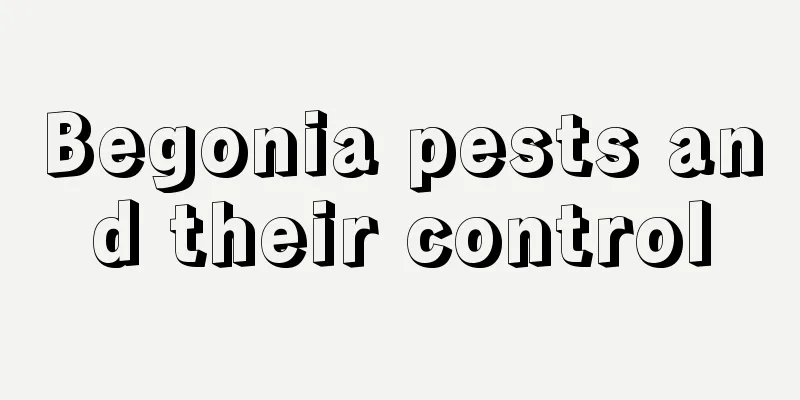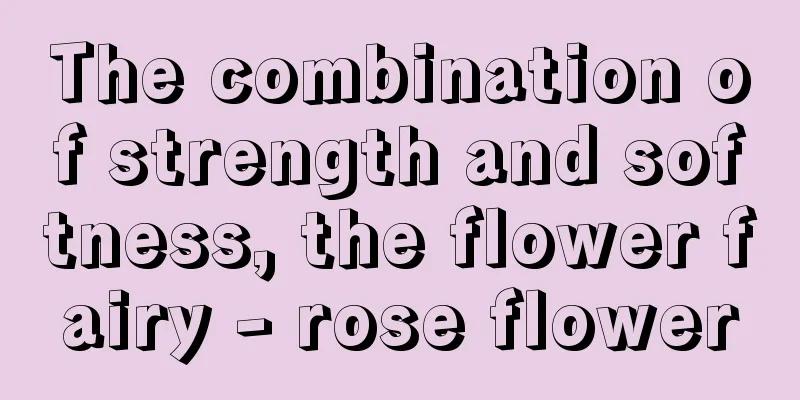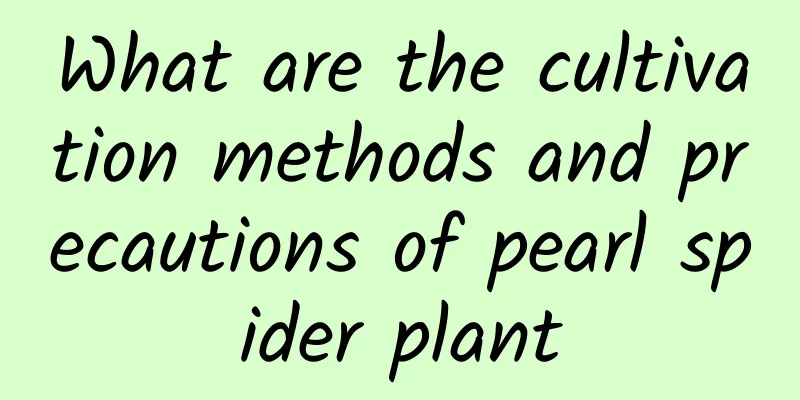Begonia pests and their control

Begonia pests: aphidsAphid disease introductionAphids are a common insect pest of plants. Aphids can harm tender green branches and leaves, sucking sap, causing new shoots to stop growing and leaves to twist and shrink. They can also cause sooty mold and spread viral diseases, which are diseases that crabapples are prone to in spring. It usually appears in early April, gradually decreases after mid-to-late June, and begins to increase again after mid-to-late August until the leaves fall. How to control aphidsThe most direct way is to cut off the young branches where pests appear. It can also be controlled by using agents such as imidacloprid water dispersible agent, high-efficiency chlorflucythrinate water emulsion, carbosulfan emulsifiable concentrate, and acetamiprid water dispersible agent. Please note that this type of medicine is not suitable for use in early spring. Begonia pests: ThripsIntroduction to Thrips DiseaseThrips can cause great damage to tender shoots and leaves, especially the tips. In the early stage of the disease, because the tender buds have not yet unfolded, the thrips hide inside and suck the sap, making them difficult to be discovered. In the later stages of the disease, the young leaves turn yellow-brown and oily and gradually wither, as if they were burned by fire, and are often mistaken for drought or sunburn. Thrips are highly resistant to high temperatures and generally appear in early May, with the most serious damage occurring from July to August. Thrips control methodsThe most direct method is to cut off the tender shoots, which can control the disease in a short time. You can also use pesticides such as acetamiprid water dispersible agent, imidacloprid water dispersible agent diluted to 200%, pymetrozine wettable powder, and nitenpyram aqueous solution for prevention and control. Begonia flower pests: Web bugIntroduction to Web Bug DiseaseWeb bugs often hide on the back of leaves and suck the juice from the veins. Pale spots will appear on the front of the leaves, gradually turning into patches. The back of the leaves will turn rust-colored and thicken, eventually leading to leaf fall. In severe cases, it will cause all leaves to fall off or a second bloom. How to control net bugsThe life of the web bug is relatively fragile and can be killed by spraying with general insecticides. For prevention and control, acetamiprid water dispersible agent, high-efficiency chlorflucythrinate water emulsion, imidacloprid water dispersible agent, cypermethrin emulsifiable concentrate, and avermectin emulsifiable concentrate can be used in combination. Begonia flower pests: stem beesIntroduction to stem bee diseaseThe larvae of stem wasps can damage tender shoots, causing the treetops to dry up and die. The adult stem wasps usually begin to lay eggs in late April each year. From late April to early May, the larvae begin to eat the tender shoots, causing them to droop and die. This damages the two-year-old branches and gradually stops in September. How to control stem beesCut off the infested branches immediately. You can also use avermectin emulsifiable concentrate, carbofuran soluble powder, butyralid emulsifiable concentrate, 3% hypertonic fenoxycarb emulsifiable concentrate 1, etc. for prevention and control. Begonia pests: spiny mothIntroduction to the caterpillar moth diseaseThere are many poisonous stingers on the body of the spiny moth. If you accidentally touch it, it will cause redness, swelling and pain, which is extremely painful. In severe cases, it can cause lymph inflammation. The young larvae of the spiny moth feed on the mesophyll on the back of old leaves, leaving behind transparent network veins. Older larvae will feed on the entire leaf blade. The moth is a gregarious creature that often gathers together to cause damage to leaves. It usually occurs in June and is most severe from August to September. Methods of controlling caterpillar mothIt can be controlled by using highly effective cypermethrin emulsion in water, cypermethrin emulsifiable concentrate, avermectin emulsifiable concentrate, emamectin benzoate emulsifiable concentrate, and chlorpyrifos emulsifiable concentrate. Begonia pests: Red spider mitesIntroduction to Red Spider Mite DiseaseThe extent of damage caused by red spider disease is closely related to climate and planting density. It is most serious in arid areas and under intensive planting conditions. Red spider mites mainly harm old leaves, usually parasitizing on the back of a leaf. The larvae, nymphs and adults will suck the sap from the back of the leaves, causing small white chlorotic spots to appear on the leaves. In severe cases, the disease turns grayish white and eventually the leaves fall off in large numbers. Red spider control methodsIt can be controlled by using pesticides such as cypermethrin emulsifiable concentrate + thiamethoxam emulsifiable concentrate, spiroclatam, fenbutatin emulsifiable concentrate, triazotin wettable powder, and 2-dimethoate wettable powder. Begonia pests: longhorn beetlesIntroduction to Longicorn DiseaseThe longhorn beetle usually lives inside the tree for three years. In the first two years, the larvae will eat inside the tree, and in the third year they will emerge, mate and lay eggs. It is one of the most important trunk borers and the most destructive pests. Methods of controlling longicornIn mid-to-late May each year, spray cypermethrin contact-bursting microcapsules (Green Weilei) on tree trunks and branch points to kill the adult insects that have made holes, depending on the situation of the longhorn beetles making holes. Spray again after an interval of 40 to 50 days. For the longhorn beetle larvae in the tree trunk, artificially inject 5 times the amount of DDT emulsifiable concentrate or chlorpyrifos emulsifiable concentrate and seal the trunk with soil to kill the larvae. For seedlings planted in groups, the natural enemy, Scleroderma guanyi, can be released. In serious cases, Scleroderma guanyi carrying Beauveria bassiana can be used for control. |
<<: Don’t clean up the dead leaves of succulents? It would be bad if pests appeared
>>: Knowledge on pest and disease control of cat's eye arrowroot
Recommend
How to grow succulent mirror
1. Breeding environment 1. Soil: The succulent pl...
How to plant mint? Potted mint planting methods and precautions
There are many ways to propagate mint. When growi...
Flower language of asparagus fern, pictures of asparagus fern
1. Flower Language Asparagus fern not only has an...
Should bougainvillea be watered thoroughly? (Does it need to be watered thoroughly once it is just planted?)
The flowers of Bougainvillea are very beautiful. ...
How to prune the goldfish plant (pruning time and method)
When to prune the goldfish plant It is better to ...
How to propagate the flower
1. Sexuality 1. Planting seeds When sowing, you s...
What material is ceramsite made of and what flowers are suitable for it
1. What materials are it made of? There are many ...
Put a few dollars' worth of flowers in the kitchen, just pick some and throw them into the dishes, it will taste super delicious!
Basil Directions: Tender basil leaves can be used...
Why are the leaves of Anthurium rotten?
1. Plants are damaged by frost (1) Specific reaso...
Difference between sweet peas and green beans
1. Leaf Difference The leaflets of sweet pea are ...
How to plant Taxus chinensis
1. Seed processing First, we need to collect the ...
Are gentian and gentian grass the same? How to propagate them?
1. Are they the same? Gentiana is the same as gen...
Can Tiger Pilan be propagated by cuttings?
There are many methods for propagating Sansevieri...
When is the best time to sow mimosa seeds?
Mimosa seed sowing time Mimosa is usually sown in...
Which month is suitable for planting honeysuckle?
When to plant honeysuckle Honeydew melon is usual...









